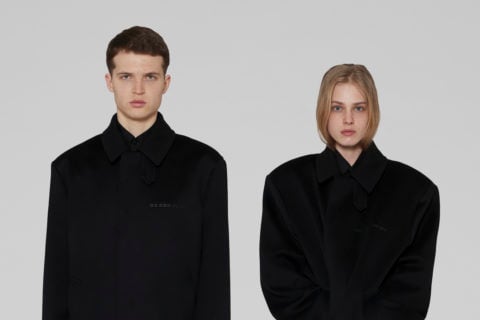“Recession Core” Is Exactly What You Think It Is, Unfortunately
From a lack of glitzy jewellery to pared-down runways, the new age of dressing parallels economic turmoil.
Everything is beige. Outfit trends have been reverting to minimalism. Beauty routines are centred around looking as natural as possible. Welcome to recession core.
On the heels of Y2K maximalism, newly minted popular aesthetics have been decidedly less indulgent as fashion begins to prioritize usefulness over exaggerated embellishments. Why? Economists have been predicting a recession for some time, and current sartorial statements suggest we’re headed there sooner rather than later. To further understand this, we can look to those who always offer comfort during times of need: celebrities.
@melbgirlambassador Keen to see more and more celebs dress like they’re poor (and yes this style has already become popular in the second half of 22 thanks to brands like Paloma Wool but I expect it to keep trending upward) #fashiontrends2023 #recessioncore #90sminimalism #palomawool
In the midst of awards show season, fans have noticed that jewellery is reliably missing from many a red carpet look. More specifically, certain celebs have eschewed statement necklaces — an immediate sign of excess and luxury — in favour of pared-down ensembles that often look unfinished. Trend forecaster Delaney Bryant (@ufodelaney) suggests that this is all intentional, predicting the lack of A-lister glitz as an unmistakable sign of an economic downturn. Let us explain.
@ufodelaney #greenscreen Thoughts? #recessioncore #celebstyle #fashionhistory #trendpredictions #quietluxury
Recessions historically make the poor poorer and the rich richer, as those who are financially secure can jump at low-cost investment opportunities while others struggle to cover basic expenses thanks to inflation. Simply put, flaunting your wealth during an economic slump is not a good look. With the growing public criticism of celebrities (read: nepo babies), the rich and famous are acutely aware of that. Perhaps that’s why, rather than presenting flashy signs of opulence, we’re seeing a shift toward ambiguous affluence from celebrities and designers alike.
For starters, the Fall 2023 menswear runways have been overwhelmingly minimal. Instead of vivid colours and sparkling adornments, there’s a rise in earthy tones, versatile layering, little to no jewellery, and practical bags (farewell to the micro-mini purse). Givenchy presented a refined take on distressed workwear. JW Anderson prioritized comfort with models clutching pillows and wearing oversized T-shirts and sweaters. Vtmnts opted for no-frills suiting as a direct response to inflation. Instead of busy, logo-mania motifs, designers are prioritizing functionality for all. Case in point: menswear is not just for men anymore.
VTMNTS AW23 Menswear pic.twitter.com/hOHZ9UGRaB
— REN (@imthespecialk) January 18, 2023
If the recent menswear runways are any indication, androgyny is no longer provocative — it’s just the new norm. Many labels featured men in skirts. There were waist-cinching silhouettes at Saint Laurent. Egonlab’s gender-neutral collection arguably skewed more feminine than ever. Acne Studios, too, intentionally blurred traditional gender distinctions by blending ultra-masculine with ultra-feminine. This approach is not only more inclusive, but it’s also more accessible. In an economic downturn, everyone is generally shopping less. But when made universally wearable, clothing becomes more of a worthwhile investment. Ultimately, nothing is quite as economical as gender-fluid style.

In that way, a new age of crafty economically informed dressing can lead to more experimentation and rule breaking. At the same time, it’s a reminder of the cyclical nature of fashion. Take the current fad of metallic tones, which have made their return via silver jewellery, chrome clothing and reflective manicures. TikTok trend forecaster Mandy Lee (@oldloserinbrooklyn) notes that the previous periods in which this particular aesthetic was popular — the “Y2K scare” and the 2008 recession — were also times of economic turmoil.
As such, recession core offers a change of sartorial pace that we’ve seen before. The celebratory, over-embellished McBling aesthetic preceded the 2008 recession, which then led to an era of early 2010s minimalism. Similarly, during the height of the pandemic, heavily accessorized early aughts styles were back in vogue. Now, as expected, a social shift is happening. And as always, fashion is here to reflect it.
@oldloserinbrooklyn Why metallics are trending, an analysis #trendcycle #fashiontrends #analysis #spacerace #metallics #greenscreen
Amid new styling statements, there’s been a gloomy heaviness to recent runways. Rick Owens put tattered seams and protective padding on models with thick black tears painted on their faces. Louis Gabriel Nouch offered a chilling ode to the 2000 thriller American Psycho, which famously critiques materialism and the quest to accumulate capital. Above all, these presentations point out the fears that come from economic uncertainty.
Lucas Bravo in this Patrick Bateman core look🩸during Paris Fashion Week! pic.twitter.com/Ob6QRIKiIl
— 𝐁𝐄𝐑𝐋𝐀𝐈𝐍 𝐂𝐎. (@raIphIauren) January 19, 2023
Of course, there’s something admittedly dystopian about our culture’s tendency to organize everything into an aestheticized category, even a recession. On the other hand, it makes the state of the world somewhat easier to understand and grapple with. After all, if we reframe an impending slump as yet another kooky fad, we can at least be comforted by the knowledge that, like any cyclical trend, it will end eventually.








